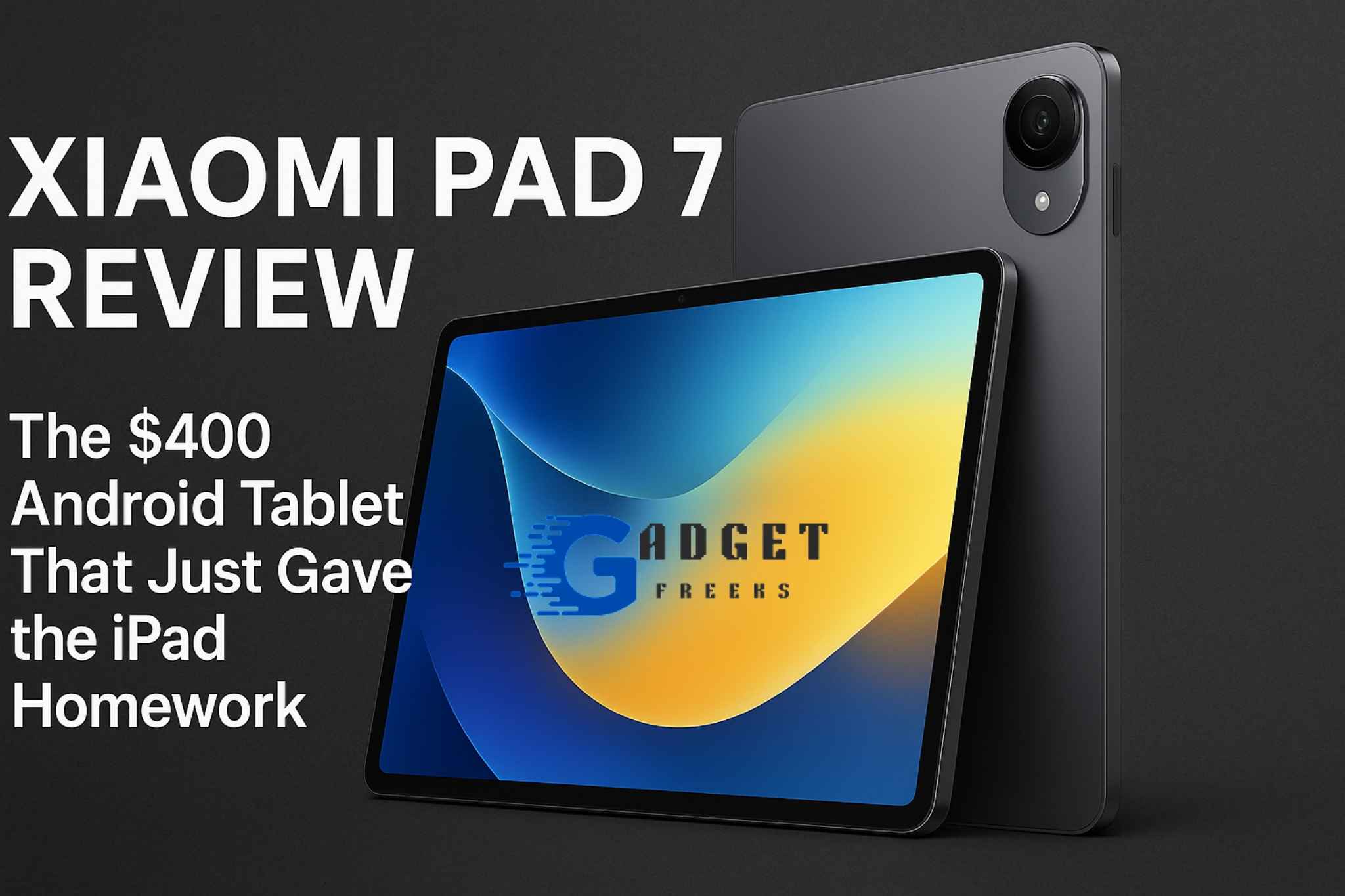You know the script: Android tablets try to dethrone the iPad, trip over their own skin, and end up as digital photo frames. But the Xiaomi Pad 7? This little overachiever didn’t read the memo. It’s not perfect, but it’s good in all the right ways—and frankly, it punches above its weight like an underdog with something to prove. Performance? Sharp. Display? Gorgeous. Battery? Relentless. Software? Well… we’ll talk about that. But make no mistake: this is the Android tablet that makes Apple nervous, and it should.
Performance? Surprisingly zippy
On paper, the Pad 7 is kitted out with the Snapdragon 8 Gen 2, a chip that’s already making phones fly. Xiaomi’s decision to drop this silicon into a sub-$450 tablet is borderline aggressive. And the result? Multitasking is buttery. YouTube plays in a floating window while I’m hammering out emails in Gmail and toggling Slack threads like a caffeinated squirrel—no lag, no drama.
Geekbench 6 scores back it up too: ~1900 single-core and ~5000 multi-core, putting it neck-and-neck with Samsung’s Tab S9 and not far behind the iPad Air (M1). This thing isn’t “fast for the price.” It’s fast, period.
The display: A mini OLED cinema
The 11-inch 2.8K display (2880×1800) isn’t just sharp—it’s lush. We’re talking 144Hz refresh rate, 1B colors, Dolby Vision support, and enough peak brightness (~900 nits) to make Netflix’s darkest scenes actually visible without squinting. Whether you’re binging The Bear or doom-scrolling Twitter (sorry, “X”), everything pops.
Does it beat the iPad’s Liquid Retina? In contrast and motion smoothness—absolutely. iPads still win on color accuracy for creative pros, but for sheer entertainment value, the Pad 7 wins the living room.
Android’s tablet problem lives on
Ah yes, the Achilles’ heel. MIUI Pad OS (still based on Android 14) has improved, but it’s like putting lipstick on a software pig. Some apps still feel like stretched-out phone UIs, multitasking gestures are finicky, and windowed apps sometimes forget how big they’re supposed to be.
You might like it – JBL Charge 6 Review
Samsung’s DeX mode is still the gold standard for Android productivity, and Xiaomi hasn’t quite caught up. That said, split-screen works well, app pinning is smooth, and Google’s recent tablet-friendly updates are trickling in. Just don’t expect iPadOS levels of elegance.
Stylus support: Almost Pro, but not quite
The Xiaomi Smart Pen 2 (sold separately, of course) feels responsive, with 4096 levels of pressure and tilt support. Writing in Xiaomi Notes is fluid and accurate, and palm rejection holds up most of the time.
But it’s not quite the Apple Pencil experience. There’s a hair of latency, third-party app support is hit-or-miss, and MIUI still lacks a universal handwriting layer like Apple’s Scribble. If you’re a digital artist, you’ll want to look elsewhere—but for note-taking and the occasional sketch, it’s perfectly solid.
Design: Premium vibes without the pretension
At 6.5mm thick and 518g, the Pad 7 feels svelte without being fragile. The metal unibody screams “I cost more than I do,” and the matte finish resists fingerprints like a champ. The squared-off edges give it that iPad Pro-lite aesthetic, and the quad speakers (with Dolby Atmos) deliver legit stereo separation—yes, even in landscape.
It lacks a fingerprint sensor, which is mildly annoying, relying instead on face unlock that… sometimes works. USB-C charging, thankfully, is fast and reliable, juicing up the 8,600mAh battery in about 90 minutes.
Battery life: It. Just. Goes.
Xiaomi quotes 16 hours of video playback, and I believe them. In my usage—mixed browsing, Slack, a couple Zooms, plus an irresponsible amount of YouTube—I was easily getting 10–11 hours of screen-on time. Standby drain is negligible, which is rare in Androidland.
Compared to an iPad Air? Slightly better endurance. Compared to a Galaxy Tab S9? Pretty much on par. Compared to most Android tablets under $500? A different league entirely.
Long-term usability: Built to last, but how long will Xiaomi care?
Here’s the gamble: Xiaomi promises two major Android updates and four years of security patches. Respectable, but not exactly “futureproof.” Apple still leads here with 5+ years of OS support even for base-model iPads. The Xiaomi Pad 7 is a sprinter, but it might not be a marathoner.
Still, performance overhead and hardware quality suggest this thing won’t feel slow anytime soon. If Xiaomi keeps optimizing MIUI Pad OS, this could age better than expected.
Verdict: The iPad Air’s worst nightmare
The Xiaomi Pad 7 isn’t just another Android tablet—it’s the Android tablet to get right now under $500. It offers performance that rivals devices twice the price, a display that turns heads, and battery life that refuses to quit. Sure, the software is still a bit of a kludge, and stylus support isn’t quite pro-grade, but these are small compromises.
For students, casual creatives, or anyone looking for a tablet that does more than browse Reddit and play Spotify, the Xiaomi Pad 7 delivers hard. This isn’t just a good budget tablet. It’s a cannonball aimed at Apple’s midrange. And Tim Cook should be watching.

